BY ROBERT ABELE
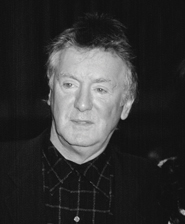 As Adrian Lyne recalls, he and all the key creative people were happy with the original ending of his 1987 adultery thriller Fatal Attraction. The unhinged other woman Alex (Glenn Close) had gotten the cruel, final word on trysting married man Dan (Michael Douglas) by committing suicide Madame Butterfly-style and making it appear he had murdered her.
As Adrian Lyne recalls, he and all the key creative people were happy with the original ending of his 1987 adultery thriller Fatal Attraction. The unhinged other woman Alex (Glenn Close) had gotten the cruel, final word on trysting married man Dan (Michael Douglas) by committing suicide Madame Butterfly-style and making it appear he had murdered her.
"Then I saw it with an audience," Lyne says, "and the movie seemed to go flat."
Lyne returned to the drawing board and helped devise a more explosive final confrontation that emerged as one of the shrewdest and most successful ending switches in genre movie history. In the new version, Alex takes the fight to Dan and the wife (played by Anne Archer) in the pastoral quiet of their country home. What began as opera-inspired was now cinematically operatic, and audiences everywhere shrieked.
Close and Douglas both went "balls out" in attacking their part, says Lyne. "She had come off movies where she was always this nice woman who stayed at home. Just a sweet soul, she
was anything but this character. So that surprised people."
Lyne, who was nominated for a DGA Award for his work on the film, details here how he engineered the suspenseful conclusion, starting with the serenity of a nearly all-white bathroom environment and a husband and wife who believe they're having a mellow night together. "When she smiles, and he smiles back, you think it's going to be all right between this couple," he says. "But in the back of your mind, you know it's all going to go to ratshit."

It's usually much better to have suspense than surprise. It's that Hitchcock thing. I've always thought that with a sequence like this that involves suspense, if you split it up as much as you can with close-ups it instantly makes the scene more tactile. Hearing the squeak of a faucet as it turns, for example, has a kind of built-in suspense. The audience is aware of the details that you're putting into the scene, and they understand that something ghastly is going to happen. This is a bathtub I would have liked in my house, actually. I like old fittings like that. I think it fits with the scene.

For the steam, the hot water was real, but I'm sure I used smoke as well, which I kind of like. You're not aware of the smoke, but it's there, and it has an effect on the color. I shot a lot of the fight handheld and a little bit wide angle-y. The lens wouldn't have been any wider than a 25 mm, because I don't like it when it suddenly starts to look like a video or something. So I don't really do things wider than a 25, or at the very most an 18. The cameramen frown on it. They say, 'Use a standard lens, it's sharper.' But who wants sharper anyway? If you break it all down with steam and stuff anyway, why does it need to be sharper?
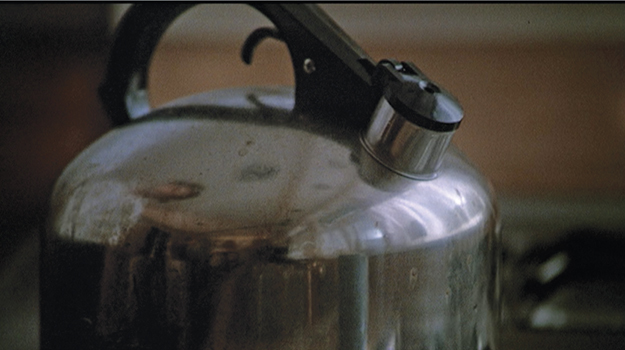
Again, I love close-ups, so this sets up the purpose of the teakettle. Michael Douglas' character has said he'd go and make his wife (Anne Archer) a cup of tea, so he leaves her alone in the bathroom. What was fun for me was working on suspending belief. How long could I keep Michael down in the kitchen believably with what was happening upstairs, because obviously when Glenn arrives, and it's bedlam, he would hear that. So with the teakettle whistling, it's only later when he takes it off the stove that he hears what's going on upstairs
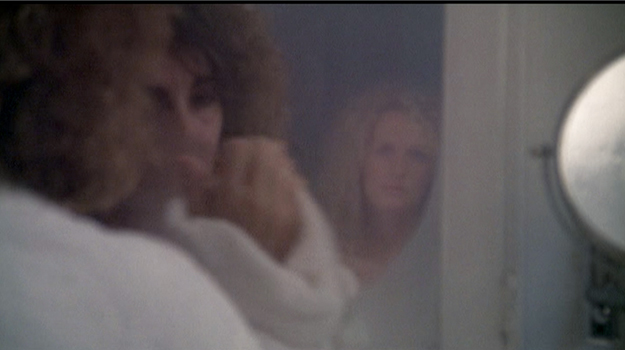
This is quite a nice tracking shot from the bath. From turning the faucet off, you see the bath is full, then you track over with Anne, just with her body, her hand. And then the camera jibs up—it's a long movement—and the shot ends with that squeaky rubbing of the mirror, so she can see herself in it. But we see Glenn. The audience screams. It takes forever for the camera to drift over. What's interesting is that the music only starts with the image of Glenn. There's no tremolo or undercurrent of menace on the track. Only the impact of Glenn's face is reinforced with the music.

When Anne whips around, it's intercut with a glass bottle smashing in the sink. We've had this peaceful feeling and then the bottle breaking jars you out of the sense of ease. I thought this shot would be more dramatic if we looked up at her like that. I did the same thing on the faucet. It was interesting because you normally wouldn't shoot it that way. We choreographed this whole scene. In the screenplay there was probably one line saying that they fight. I'm exaggerating, but something like that.

Glenn was anxious not to be a knife-wielding lunatic, so we talked about it, and I said to her, 'What if she's got the knife dangling by her side, rather than over her head?' which would have been the conventional way to shoot it. I thought, she could be moving the knife. It could cut into the material of her dress, and then if we took it a beat further, it could cut into her leg underneath. And if she starts to bleed and doesn't feel it, it would add enormous jeopardy to the scene. It would suddenly make her totally dangerous. Of course, we had a blood bag attached to her dress underneath.

This is the link between the sequence in the bathroom and downstairs, because water starts to drip through the ceiling. The water on the ceiling downstairs was shot in the real house. We sprayed water on the ceiling and hoped for the best, but it didn't work. It only worked when we painted some oil on the ceiling and it started to bead. That's the sort of loopy stuff that can take forever, and the poor producer is screaming blue murder. I will fight tooth and nail for shooting time, because it lets you have time for big close-ups like that. Time lets you cover it properly. All of these details make you smell and taste and feel it. They make it a much more effective scene, I think.

It always helps when you dutch [tilt] the camera a little bit, when you angle it, so that it's not just flat-on. The camera's looking up at Michael as he's charging in, which makes him stronger. But it's also tilted to one side just slightly, not too much. Angle it too much and it becomes corny. But just a little, and people aren't aware of the trickery of it. I'm also a great believer in not stopping things if you don't have to, to keep that energy. So I'll do two or three takes on the same slate, and then say, 'Do it again! Do it again! Back to the beginning!'
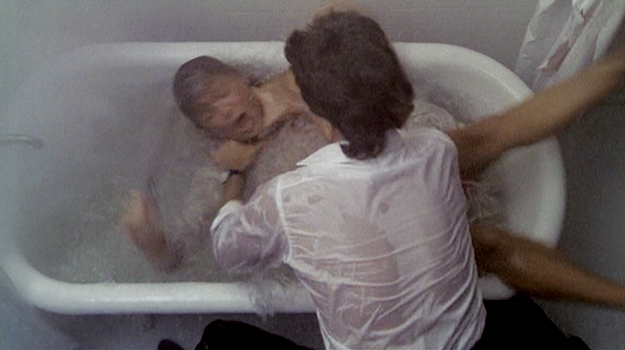
Now and then you need a shot to get your bearings, and that was Glenn's entry into the bath. It's an absolute nightmare to shoot with water. Everybody was just soaked. I'm sure we would have shot this up on a ladder. I use the zoom lens, not to zoom with it but so that I can vary the size slightly. So if I do three or four takes at 75, then I'll do a couple at 90, but this way I don't have to have the camera assistant taking a lens off and putting another lens on, because by that time everybody's bored with it. All the juice has gone out of the scene.
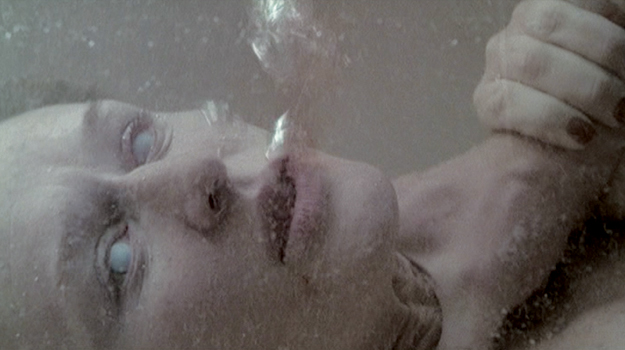
It’s nice to have lots of cuts to get the feeling of frenzy when he’s drowning her. We had a real bathtub that we used for this top shot looking down, but when we were looking up at Michael through the water, that was a glass tank. Obviously these were contact lenses, and I think it was probably a bad choice. What you really wanted were her eyes rearing back, up into her head, but unless you’re having an epileptic fit, you can’t do that. So all I could do was put in these contact lenses. You want people to think, is she dead? We also put blood in her mouth, so it comes out when she’s under and mixes with the water.
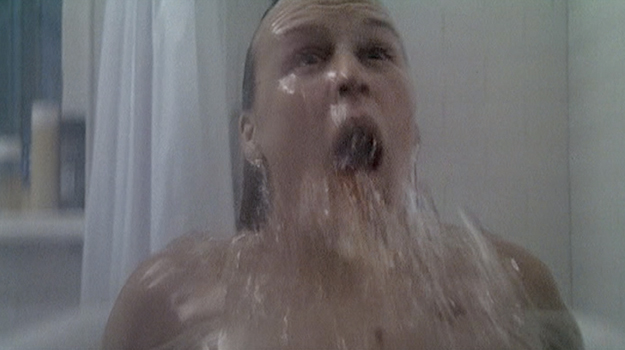
This moment starts with a nice shot of the water looking absolutely flat—no music, no nothing—before she rears up, which I think is lovely, sort of extending the agony. But Glenn was very frightened, and in fact, for a long while couldn't go backwards into the water with her eyes open. I remember thinking, 'Jesus, I'm screwed.' She must have been under the water forever in order to get her not moving. I was also thinking about the Henri-Georges Clouzot movie Diabolique and the famous shot where [Simone Signoret] pops out of the bath. Throwing in an homage can be nice. I probably shot this in a little bit of slow motion, 48 frames perhaps instead of 24, so it extended the moment a bit.

There has to be a beat where you get the geography. Close-ups are incredibly important, and there are two or three around this particular shot, including a very tight close-up of Glenn's face. But you can't do it all tight or people get lost and frustrated. So you need a reference point to give you dry land, if you will. Otherwise it's just a mishmash of shots. Also, it's much more interesting if the camera is below her than at her level. I always try and shoot chronologically where possible, just because emotionally it helps the actors, and it helps me. But I can't always do it.
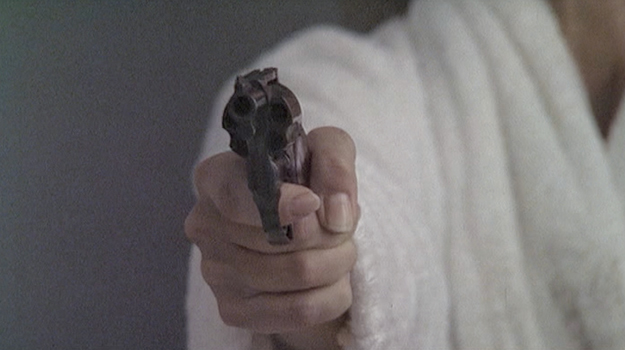
As I've said, I always split these things up. It would have been crazy not to have a close-up of the gun. It's much more interesting to reveal that it's Anne after we see the gun than the other way around. It's bang, and who the fuck is that? And then you know. When we talked about this sequence, I remember saying the only one who's blameless in the movie is Anne. So she was the only one who could fire the shot, really.
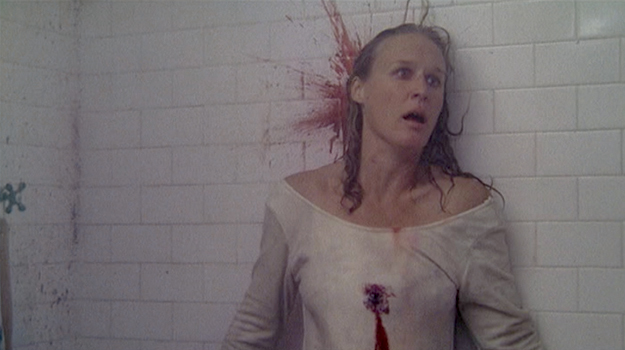
It's definitely much more visual to have her against the wall, because when she sinks into the bath, there's a nice smear of blood on the white wall. Of course, those squib things are always a nightmare. You never know whether they're going to look real or not. Glenn was balls-out. She didn't do things by halves. There was incredible adrenaline shooting the scene, and most of the stuff was handheld. I always do a shot list but normally I don't storyboard. It becomes too mechanical when you do that, and I try to avoid it really. I visualize the shots and I know pretty much the way it's going to look. But I love finding things.